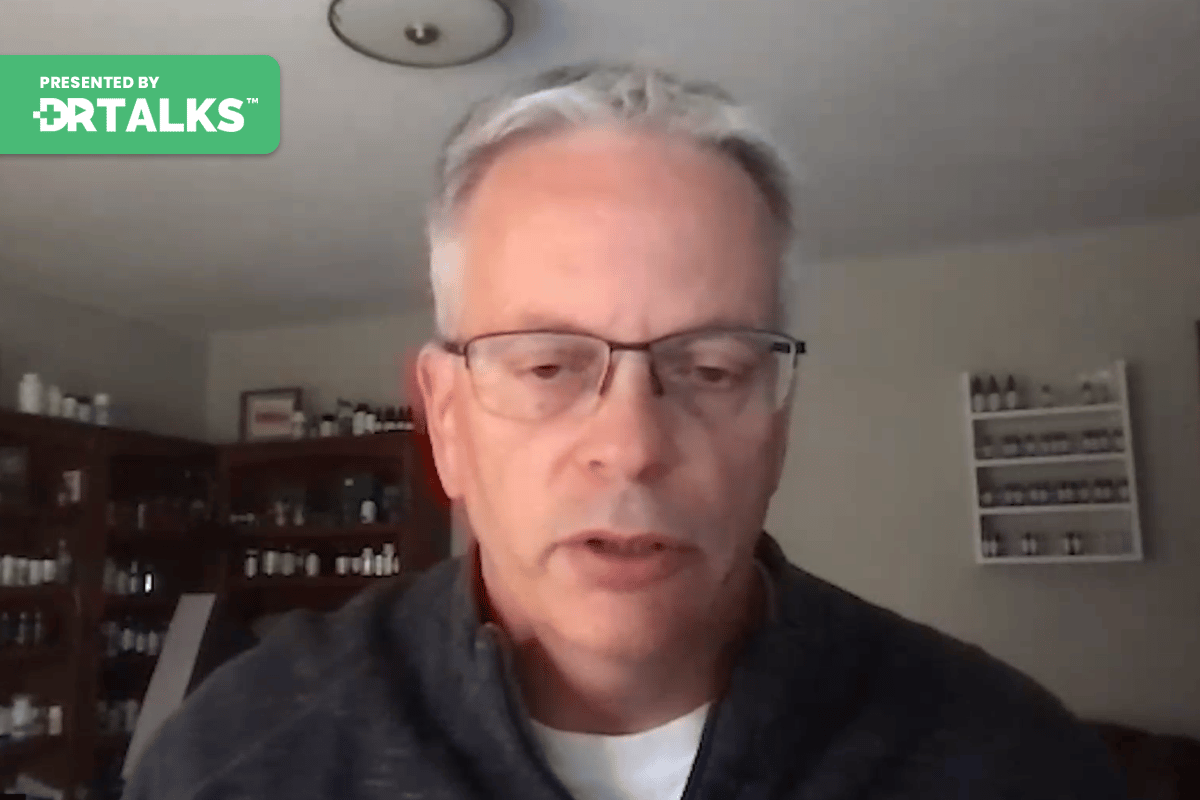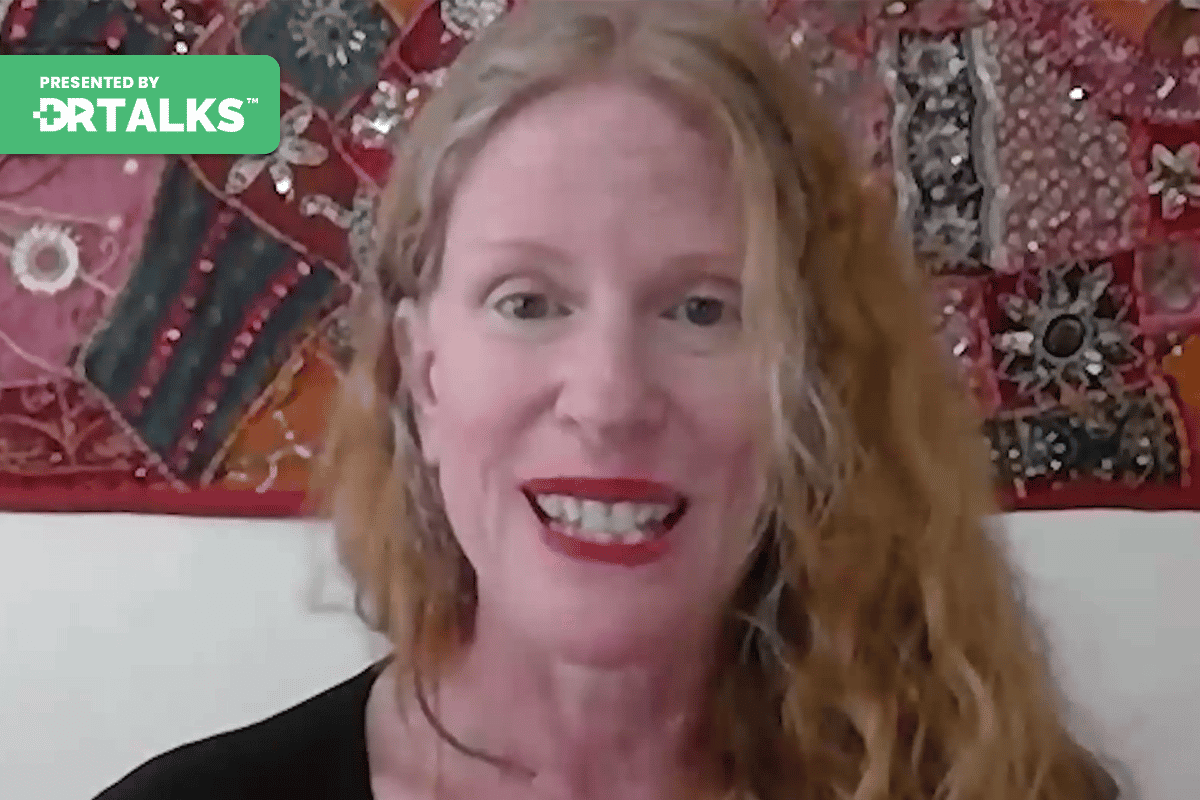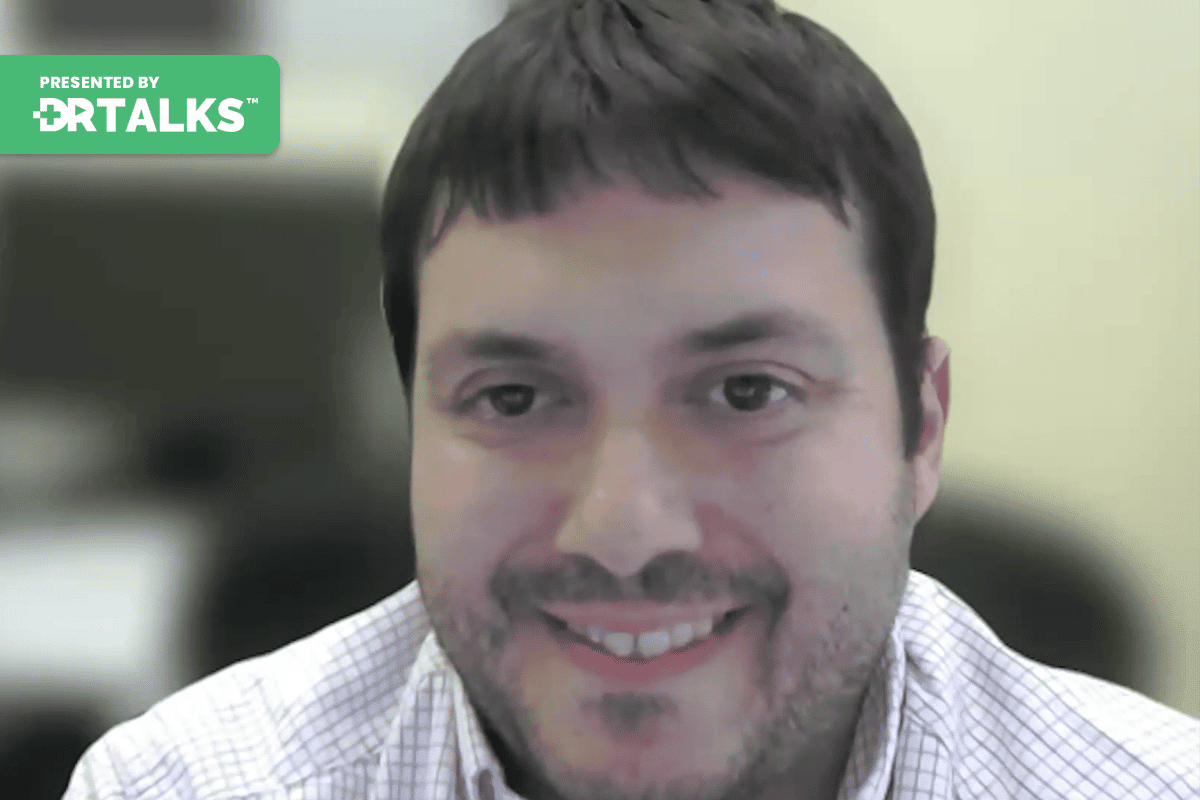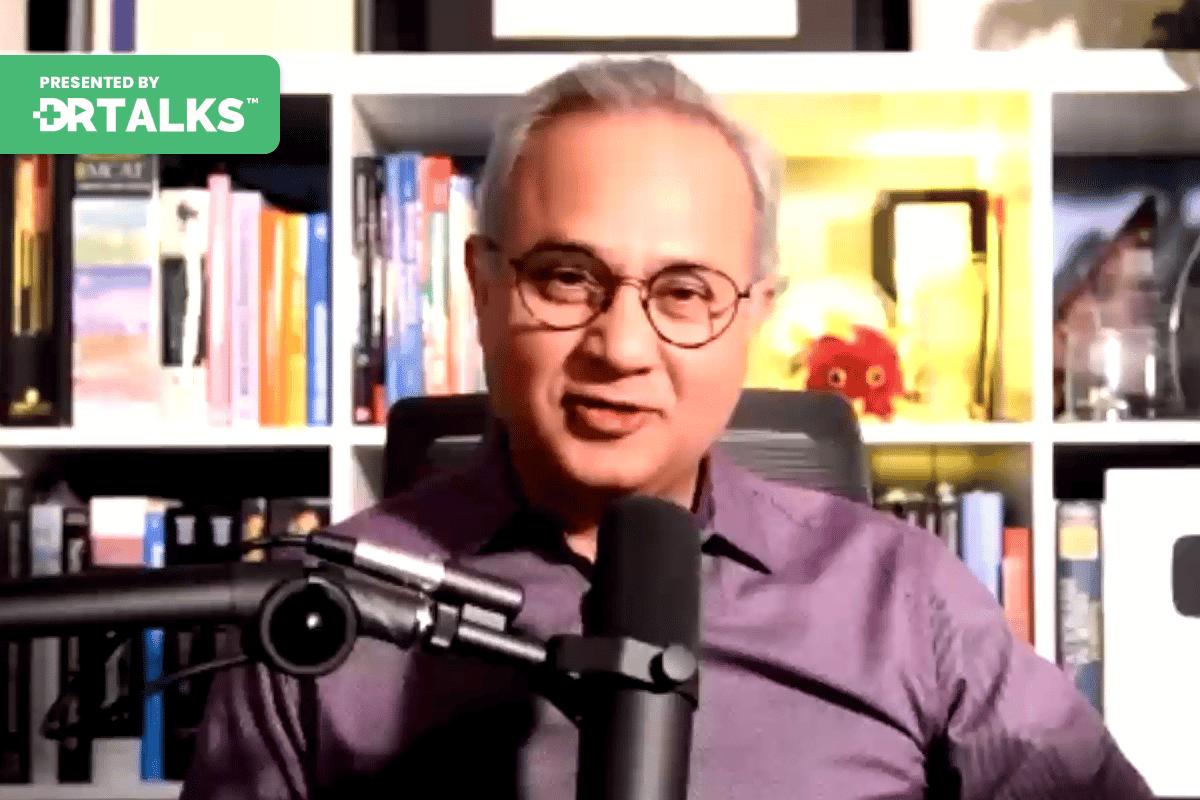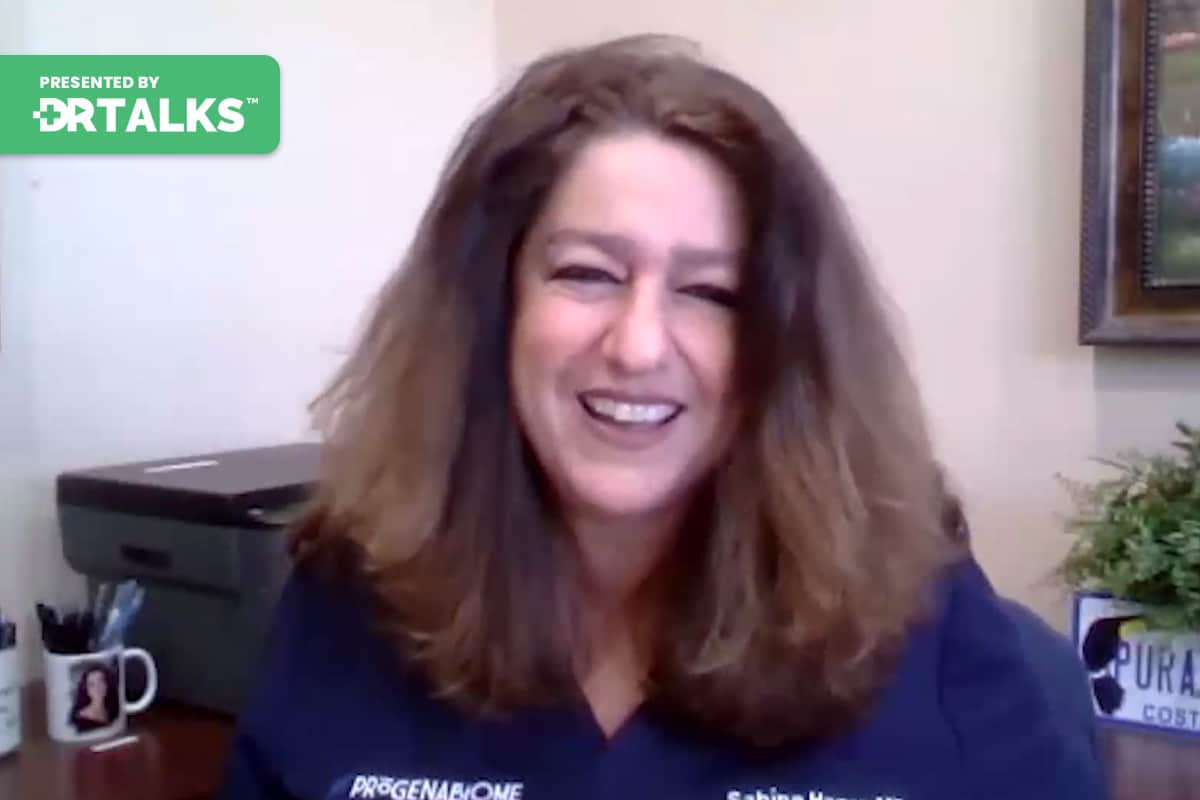Join the discussion below

Eric Gordon, MD is President of Gordon Medical Research Center and clinical director of Gordon Medical Associates which specializes in complex chronic illness. In addition to being in clinical practice for over 40 years, Dr. Gordon is engaged in clinical research focused on bringing together leading international medical researchers and... Read More

Kevin Conners, DPSc, FICT, FAARFM
Dr. Kevin Conners is the Clinic Director at Conners Clinic, an Alternative Cancer Treatment center. He graduated with his doctorate from Northwestern Health Sciences University in 1986 and has been studying alternative cancer care for over 23 years. He also holds AMA Fellowships and Board Certifications in Anti-Aging Medicine, Regenerative... Read More
- How do different detox genes possibly affect one’s inability to overcome such a disorder
- How the histamine genes play a part in continual inflammation
- How methylation gene defects may add to constant fatigue
Eric Gordon, MD
Okay welcome welcome to another addition. I guess we can call it of long C0V!D and chronic fatigue. We are doing this to let people know the possibilities you know and how they can maybe help themselves and help direct the physicians they’re seeing. Give them some ideas. As you have heard me say many times I’m really a pre initiative of the work that the government is doing on research. I just feel that the treatments that the government sponsored long C0V!D clinics don’t offer much for people. And those of us who’ve been treating chronic fatigue and chronic Lyme and any other chronic illness really all the autoimmune diseases you know we understand this is a problem of chronic inflammation and you usually get here through your environment and your genes and today I have a real pleasure of talking with Dr. Kevin Connors of the Conners Clinic in Somerset Wisconsin and Dr. Conners has done some really good work on understanding how our genes affect these most important systems of detox and inflammation.
And I hope that you’re going to get information that you can use and help you on your healing journey. This is a big subject. So Dr. Conners I would love to start off with talking about which I think is probably in my mind that one of the basis of chronic illness is the failure to detox and how you approach this and what you’ve seen. So I agree with you failure to get out what’s on the inside that your body is trying to to deal with that you’ve been exposed to either through you know, poisons in the air that you breathe in or that you ingest or endotoxins from viruses and bacteria as they are trying to survive in your body or dying in your body. And your immune system and your detoxification pathways have to deal with. So how do you deal with detoxification?
Kevin Conners, DPSc, FICT, FAARFM
Well that’s a big question. I actually wrote a book on it called the seven phases of detoxification. But I think in this little episode we’re going to talk about really in the liver detoxification pathways. And how issues from a genetic standpoint can play into that because that’s what can really limit two persons rate. So when we talk about detoxification, it’s really about you have to be able to get rid of poisons faster than you are taking in poison. So you could say maybe your rate of detoxification has to exceed your rate of toxification, that’s not really a word, but let’s make one up. So as you’re becoming more toxic because of environmental things that you’re exposed to from various, you know, you know, maybe a myriad of possible exposure sources you have to get rid of these things.
So if your detoxification rate is slower than your than your exposure you’re gonna become sicker because these things you know are going to circulate through your body and then they’re going to just be pushed into the extracellular spaces and then they can cross cell membranes and be stored within cells. And it can cause you know much worse conditions because if it affects the nucleus and can damage the D. N. A replication cycle then it is the cause of cancer. If it just stays in the extracellular spaces and clogs things up doesn’t allow you know ways to move out you’re just gonna you know be sick depending on what organ is involved. You could develop and you could develop antibodies against that organ as your immune system is trying to help with the detoxification process which it’s not supposed to. You can develop antibodies to an organ and that’s called an autoimmune disease. So worse things can happen as you become more toxic. So the idea is you want to try to increase the rate of detoxification.
So as we look at it, how I would look at it. Is that okay well then you know most people go okay well I want to pull stuff out of the tissue then and get it out of my body. But if you pull stuff out of the tissue faster than your liver can process it. We have a problem. It’s just going to circulate around in the blood again and be deposited somewhere else. So those rates of detoxification pathways in the liver are very important. And those can somewhat be monitored through looking at a person’s genetics. So there are specific genes for Phase One detoxification pathways and specific genes for Phase Two detoxification pathways. Those are the main detoxification pathways in the liver. So if we look at a person’s genetics and we look at their cytochrome P450 genes, we can get some clues to the rate of that pathway. We look at their pond one of their n 80 genes. That’s the Phase two pathways that we can get an idea of how fast that’s going to go through. It’s not a perfect system but you get some ideas on how to support that patient where there may be some damage of the flow of poisons out of their body.
Eric Gordon, MD
Can you give us some, you know, you mentioned upon one in the N. A. T. And the cytochrome P450 are there particular? I’d say the most common bad actors if you will the things that people should, you know, be really be aware of because many, many people have gotten, you know, their genetics done but often they’re left looking at a lot of data they don’t know what to do with.
Kevin Conners, DPSc, FICT, FAARFM
Yeah. So it’s really it’s hard, there’s a lot of research on these different pathways and some of the specific genes in those families of genes because like the cytochrome P450 genes, there’s dozens and dozens and dozens of those genes, right? So really, you kind of have to look at when we look at some of these genes, we look at, okay, here’s the cytochrome P450 family. How many singularly ill or double? A little defects do they have in that family? If they have a lot, then that could be an issue. Or if they have defects, genes that are uncommon to have defects. Some genes in the gene families, it’s like, super common to have a double eagle defect on this, like 90 some percent of the people have a double, then you would be less concerned about that, But if only 4% have a double, a little defect on this specific gene, and you have that, that raises some questions that this could be a bad actor, that could be slowing this person’s pathway down.
So, there’s the way to look at it, at least in my perspective, is how many defects that they have in that entire family. And then, secondly, are some of their defects. Oddball defects, meaning that they’re uncommon defects. That could mean that it’s given another clue that that could be a bad actor, that could be hindering it. No, no, we have to say that, you know, you don’t treat the defect and and you’re just because a person has a defect doesn’t necessarily mean that there’s going to be dysfunction there, but, you know, as we reason together that we can say, well, this could be an issue. This might be a pathway that it would be wise to support. So, and that’s really what the research shows. You don’t treat a defect, You can’t fix a defect. It is there? How did they get the defect? It could be acquired through, you know, exposure to a toxin themselves, or it could be inherited from, you know, their parents. We would know, unless we would have had a genetic test on that person when they were six and now we look at them when they’re 60, there’s a difference. But nobody has their data, right?
Eric Gordon, MD
Yeah. I just want to emphasize for people how important it is to look at the frequency of the real the frequency of the gene that is you know, different from what we expect. You know, if it’s a the 50% level, there’s probably something about it that had some survival benefit along the way, it’s the 20 to 30% that you start thinking about. And as you said, if it’s 4% you really gotta wonder this could be something that an area that really needs support. So I just think that’s an important point for people to keep in mind, because too many people see a defect and they think they’re doomed. And something we’ll we’ll talk about when we get to the methylation genes, you know, so, and as far as the, you know, your basic so your work, well, I guess what would be, is there any, you know, one or two genes that in the in the liver pathways that you see that need to support more often, you know, like more common, more common group of them?
Kevin Conners, DPSc, FICT, FAARFM
Well, definitely the pod one pathway genes I would say are more commonly an issue, at least with our, you know, member base. That’s kind of what we see. I mean, we see, you know, a large part people that are diagnosed with cancer. So and then you go, okay, well there’s a cause to cancer. What’s the cause of the cancer? Well, most commonly it’s some sort of toxin that gets inside the cell that affects the nucleus, it affects the replication pathway. And then you go, okay, what’s the main way you get rid of certain toxins? Well, the pond one pathway is the main way that you get rid of pesticides and herbicides, a major cause of cancer. So, if you know, so that’s what we tend to see most in our member base because of who we’re seeing. So it is a little different and there is some data for people with chronic Lyme, so there’s there’s different data that can be extrapolated, you know, once you know what a person’s, you know, diagnosis is, you know, there has been some research done on some different conditions. But definitely what we see is that pond one pathway inability to get rid of pesticides and herbicides in a proper manner proper rate can leave them in the body and then harbor in the cell.
Eric Gordon, MD
Yeah. And that that’s something that that we also see because any the issue of pesticide herbicide build up leading to chronic inflammation is a huge is a huge problem. So that’s and you know, I really you know, we always come down to it that the difference between the person I think with any chronic illness is often failure to either overexposure but more often is failure to to detox what we’re all exposed to. So our environment has changed dramatically. So let’s move on to the histamine genes because those are ones that is a special interest in long C0V!D. Since so many of the people do have issues who develop long C0V!D find that they have coincident problems now with mast cell activation where you know, maybe before they had just an allergy or rash now and then, but after C0V!D they this becomes a major major problem for them.
Kevin Conners, DPSc, FICT, FAARFM
Yeah, I would agree. That’s so common with with long C0V!D type symptoms as they have this ramped up inflammation. That’s a history like mast cell activation. So you go then you gotta go look at the history genes and you go, wow, is there a correlation are these people that are suffering with long haul C0V!D is at least in part due to, you know, they have a lot more defects in there. Hmm. T. Genes how they would get rid of history in the tissue Or the D. A. Oh genes how they would get rid of history in the gut and inflammation in the gut. So it’s more complex than just that for sure. But if a person has those defects again, the inability to get rid of or calm down that histamine response is huge. It’s it’s it’s at least a fairly large part of many of these people’s symptoms. So supporting that as best you can is wise the difficult part is that it’s not easy to support that. So certainly it’s much easier to support that in the gut. If it’s the D. A. O. Gene that has defects that’s making the D. A. O. Enzyme in the gut, you can give a D. A. O. Enzyme but you don’t absorb that enzyme so you can at least calm down that inflammation in the gut.
And as you know, so much of our systemic inflammation starts in the gut. So if we have food sensitivities that are not being addressed, we’re already ramping up inflammation and histamine is going to be a part of that inflammatory process. So you have to address food sensitivities because people don’t know they even have them. So getting a good you know lab done where you’re looking at those and looking at peptides of foods not just the whole protein would be wise to look at looking at their jeans and their D. A. O. N. D. A. Oh defects and supporting that with taking it D. AO enzyme even between meals where you’re calming down that inflammatory process that’s always wrapped up a person can then decrease their systemic inflammation from there. And then how do you deal with you know the H. And M. T. G. Defects where how you make the D. A. O. Enzyme in the tissue. Then you’re getting into all the anti inflammatory and anti histamine type nutrients which some people respond to better than others. It’s just as simple as that. It’s just not an easy fix.
Eric Gordon, MD
Yes. You know it’s not not an easy fix. It is a good way to describe it to people. And we’re gonna have some discussions just about MCAS and mast cell activation. In going into detail. But I think that again one point they always have to remind people is the mast cells are just a primitive part of your immune system or that they affect everything, every component and you know that you have the H. And M. T. The defect in the metal transfers to get rid of histamine is really important. So but and then the other genetic issue which a lot of people are aware of is methylation. In fact as we were talking before we began to record I think some of the misunderstanding of the genes around methylation really confuse people and probably sometimes create too much fear. You know people have this idea that you know if they have mthfr they’re doomed. I just remind them that there are many populations that have a 50% penetrates of that gene. So it’s not quite so black and white. But I’d love you to give a little overview of you know the other components of that pathway that people should be thinking about. And just some of the caveats on the supplementation that can get them into trouble.
Kevin Conners, DPSc, FICT, FAARFM
Yeah well we’ve seen so many people get into trouble because contact I said oh my gosh I have a double the effect of my mthfr 677 I’m gonna die tomorrow. And that is far from the truth. Matter of fact there you could live a long happy life and never have any issues from that. And that’s true for any of the genes. It’s not the gene it’s the epigenetic environmental things that are going on that affect that gene. The worst thing I think that a person could do is look at a gene like the MTHFR gene and then go oh I have the need for methyl groups. So I need to start taking method? Tetra hydro folate or methyl Coppola. Mean that makes sense because I have a defect. Well, it just doesn’t always work that way. Matter of fact, two people can respond differently with a defect. You can have a defect in your pathway, actually goes faster, I could have a defect and it actually slows the pathway. So that’s why I always say jeans leave clues, that’s all they are. They’re just clues. You have to put it together with the entire history of the person what symptom patterns they have going on.
I’ll give you a for instance, a person can have an mthfr defect, go to a practitioner that maybe is not fully informed about what we’re talking about and then, you know, or they self apply, you know, method. Tetra hydrofoley, they start taking a gram or two a day of this or more. And what that does is that can push a different pathway. So when you take supplements, you have to be careful because you are affecting metabolic pathways and you could affect it in a way that you don’t want to affect it too much. Mental groups could do harm to a person. So I’ll give you a for instance, with our cancer members, we don’t want them to take excess method groups, even if they have defects in the mthfr gene or any other, the methylation pathway genes. Because what do methyl groups do you need methyl groups? They help silence genes, they turn them off. But if you have a diagnosis of cancer, we don’t want to risk having excess metal groups and silencing tumor suppressor genes, tumor suppressor genes are supposed to be quote unquote turned on when you have a cancer to stimulate apoptosis of that cell. If we’re x if we’re consuming excess metal groups, we could, you know, theoretically silence our tumor suppressor genes, even though we might not have any defects in our P 53 pathway or our Baraka pathway.
We could be turning those off. So we don’t want to do that. Plus we have our patients consuming good, followed by e you know, you know, green leafy vegetables already taking a supplement with excess method groups could easily be in over methylation state. And produce that another example for somebody who doesn’t have cancer. Oh, I have an mthfr defects. So I have to take a tetrahedron foley. That’s my problem. That will solve my problem by taking extra methyl groups. We will push the biopsy urine pathway harder when we push the by opteron pathway harder. We could end up with excess serotonin levels, access dopamine levels and then end up with complicating factors there. I’ll give you an example, I’ve had patients that, you know, new, maybe they did a genetic work up and they, you know, it’s not as common now, but years ago people would only maybe get, you know, 10 or 15 genes tested. One of them was the mthfr gene because all the staff who was about that, they saw that they had a defect, started taking methyl groups, pushed the biopsy pathway which is where you make all your neurotransmitters. And then they ended up with access serotonin while you think, oh that’s the happy, you know, hormone, right? Happy neurotransmitter. Well in excess it can make you be very rageful especially if you have a defects you can you can it can increase rage and anger so it can produce things that you don’t want to produce. You want to take us as broad of a view of genetics as you possibly can before you start supplemented based upon specific genetic defects.
Eric Gordon, MD
Yeah, I think that’s a very important point that the body does not is I would say it’s a it’s more of a bag of soup than it is. A bunch of lego toys, you know, I mean like the connections are myriad and not linear. So we have to be careful. What about I mean, one of the areas that a lot of people are interested in is just you know, in this area of methylation genes is the difference between the different types of B. 12 and the different types of folate just little sort of illuminate that a little bit.
Kevin Conners, DPSc, FICT, FAARFM
So the different types of B 12 are there’s really four main types quality, which is more synthetic. We don’t recommend that for anybody, then there’s hydroxy kamala mean, and a dentist. So kamala mean, for our member base, that’s what we recommend. And then there’s method kamala mean? So usually a person does fine with taking some method kamala. Me, but if they’re taking method kamala kamala mean, is the B 12 component, it has to be attached to something that’s the way it’s calculated. If it’s related to a methyl group, then that will become a methyl donor. Carbon group with three car with three hydrogen is on it, That’s a methyl group that will become a methyl donor in the bloodstream. And the thought process was if I have a M th fr defect, I should be taking methanol kabbalah, because I need more methyl groups because that’s what helps process the methylation pathway. That’s the end product of the methylation pathway.
Same thing with five tetra hydro folate supplements on the market. That’s the end product of the m th fr gene. So if I have defects. The thought process was I need more of that. Well, again, we have to be careful not to make the mistake to treat the defect. By looking back upstream from five mental tetra hydro for giving folate in a natural form of folate. Never give folic acid. That’s a synthetic folate does not work the same way. Can actually cause damage to the body. Matter of fact, some have theorized that can actually cause damage to the M. Th F. R. G. And maybe why we have so many people with M. T. H F. R. G defects is because The addition of folic acid to bread back in the 50s in America. So folic acid is synthetic. You don’t want to use that, but a folate to calcium folate might be a better idea or maybe just start eating more green leafy vegetables. So you get naturally occurring folate that has synergistic other nutrients that we don’t even know about yet. So always it’s best to get our nutrients through our food if possible. So maybe that’s a better way. But at least you want to take a step back and look okay if I push this pathway, which where is it going to go, ultimately? What, you know, I have to know what’s downstream. So you need to look at that and like I like you just which was brilliant. It’s not just as linear as that as that graph goes either. So by add metal to try to fold it. Is that just gonna now push the methionine pathway? Well, no, because it’s more like soup, everything is connected. These specific metabolic components affect other processes in your body. And you know, you’re adding fuel to something possibly that you don’t want to add fuel to.
Eric Gordon, MD
Yeah. Could you talk a little bit about how this affects the you know like Sam-E and how that can affect you know dopamine and and just energy and in general?
Kevin Conners, DPSc, FICT, FAARFM
Well Sam-E is part of the society pathway and it’s necessary for energy and such like you said. But it’s also connected then through the biopsy and pathway and that affects all the neurotransmitters, serotonin and dopamine and glutamate. And then you have it just gets very complex. So when you look at somebody these genes for instance when we’re looking at a person who has a diagnosis of cancer, one of the genes we want to look at is the glutamate genes because that those are to be important because glutamine can be it is common to be a major feeder for cancer. So can methionine. So that pathway is important. You don’t want to push excess methionine and excess glutamine because you can basically be creating fuel for a growing cancer. So you have to be careful with those pathways. Specific defects in the glutamine pathway can accelerate. Gluten means transfer to glutamate as well and that affects brain issues. So if you don’t have cancer it can increase the amount of glutamate in the brain and glutamate is a neurotransmitter in the brain and it’s an excitatory neurotransmitter in the brain. And it’s how many people have O. C. D. Issues anxiety issues. Most of them you know at least have a component of excess glutamate in the whole in the picture for those people.
Eric Gordon, MD
Yeah I think you made a very good point. We when we first started going down the rabbit hole of genetics many years ago we really thought we had the answer to many diseases. And of course it’s turned out that other than cancers some of which often involved a change in the gene of 1,2,3,5 five genes when we deal with chronic inflammation and chronic fatigue. And now long C0V!D we’re dealing with a multitude of interacting genes. And just you know when it comes to the glutamine glutamate pathway we always have to be very delicate because a lot of our chronically inflamed patients. Yeah the glutamate will really cause a problem very careful with them. And so when as you’ve you know studied because I said what I’ve been impressed with is how you know your deep understanding of these pathways and especially the connection to the BH4. Because to rap I guess to make my point is that all these are involved with inflammation which is what’s going to trigger fatigue on some level you know if you have on you know if you’re when you’re inflamed your body’s response to inflammation? One of the is along with it is fatigue. So are there any particular tips you can give to people that you think are safer to you know to stick their toe in the water as they try supplements.
Kevin Conners, DPSc, FICT, FAARFM
Yeah I would say so. Especially given fatigue with chronic disease and like long hauls type symptoms it’s often brain fatigue. It’s often brain inflammation I should say. So now brain inflammation has some components of genetics to it but more components of environmental. So anything that crosses the blood brain barrier that shouldn’t cross the blood brain barrier. Your brain has to deal with it meaning like if it’s a virus or if it’s some sort of toxin what whatever it is your brain has to deal with it. And you have certain cells in the brain, the cells that make up the blood brain barrier or the astrocytes. And then you have certain cells in the brain that are your immune cells in the brain. Those are your microglial cells. So the micro glial cells would be equivalent to in your rest of your body. Kind of like your macrophages that circulate around and engulf bacteria right? And then they dissolve it and that’s called ketosis and it just eats up that bacteria.
Well that’s what your micro glial cells do in the brain. But when you and they with toxins it actually grabs onto them and brings them over and gets rid of them to the, to the bloodstream and gets rid of the toxins. So they circulate around these micro glial cells. But the bad thing that can happen with chronic infection with you know, toxins that enter into the brain in excess with brain damage because of trauma, brain, physical trauma like football players. And such a lot of this research has come out of all the money that’s been poured into brain research with post concussive syndrome that these micro glial cells get damaged and that that’s what’s called a primed microglia cell. And then they can sit and not be as mobile as before. So instead of traveling around the brain looking for bad guys to engulf to drag out of there and get rid of, they just kind of sit there and then they can move into a worse state. So they’re called primed microglial cells and then they can move into a worse state and they could actually be an inflammatory cell. So they are literally spewing out inflammatory chemicals called cytokines. So that’s where a person really has post concussive syndrome. That’s where a person can have really bad symptoms with chronic Lyme issues or long haul symptoms where they just have a lot of brain fog, they just can’t they just don’t feel right.
They have a lot of fatigue, they can’t get out of bed, they can’t think straight, you know that you have inflammation in the brain. So what are some hints to do with this? Well the beauty of all this research coming out of post concussive is we have details that is not really supporting what they wanted to support. They wanted to find a drug that was going to take care of this. And they found that steroids which would be the normal thing that drug wise that you give a person with inflammation in the brain don’t tend to actually help these primed glial cells. These prime micro glial cells they can actually make it worse. So what they found is that it is natural things that will actually calm down those prime micro glial cells and these are things that any natural doctor would think of first for inflammatory processes there. Like the curcumin, the flammini type families. The curcumin and boswellia, white willow bark, the stinging nettle, the E. G. C. G. From green tea extract, the resveratrol.
Those are the things that can help calm down the inflammation of the brain that those people are pretty safe to take. They tend to be less have less allergy issues with them. But they could be just a lifesaver for these people you have to take fairly high dose and you have to go slow and ramping them up but calming down that inflammatory process in the brain. You can give a person their life back and you know you there’s other things that you have to be careful of that will that will ramp that up, like you gotta alcohol, they found one of the worst things you could do with a person that is Prime microglial cells over exercise. People think they’re going to continue to work out like they did when they were 20 years old. Can ramp up prime micro glial cells and ramp up the inflammation of the brain. Further head traumas are pretty commonsensical and further toxin exposure is pretty commonsensical. So anything you do to help heal the blood brain barrier and calm down, that was prime micro glial cells It fits back to the flavonoid families.
Eric Gordon, MD
Yes it’s the you know and I think that’s where the toxins come in as well because that it’s the signals from the, from the body as we say from the periphery that get into the brain that are causing a lot of these problems. And this is where I said that circle of your detox genes and your histamine genes and your methylation genes all are coming together. And you know and that’s where I think as you mentioned, the herbs are probably our first step our first choice because they generally, I like to think they co evolved with us. So less chance that they’re going to make a mess when we’re trying to fix things, you know we sometimes think we’re smarter than we are but and so what about one of the, one of the things that always intrigued me is the whole the Bh four pathways. And how important Tetrobiopteron is. And is there do you have any particular ways that you work with that directly? Or is it anything that you have found to be really helpful when people have imbalance in that pathway?
Kevin Conners, DPSc, FICT, FAARFM
There’s not one thing for sure. Everybody is different and and with any issues with the biopsy pathway when you’re looking at those gene defects, you that’s where especially with the biopsy pathway, you have to go back to the patient’s symptomatology It’s kind of like dealing with the low thyroid, you could do a blood work up and it tells us so we have, you know, hashimoto’s but it doesn’t tell us the dosage that we should be on in either supplementing it. Same thing with a biopsy pathway. Oh we have, let’s say, you know, issues with serotonin. They’re very low because of these M. A. O. A defects. Maybe. But we’ve got to look at the patient’s symptoms, they have clinical death, depression. Well then you want to maybe support that pathway in a certain way, but again too high of serotonin can be equally problematic. So you really gotta balance it based upon the person’s symptoms. Not based upon their genetics.
Eric Gordon, MD
Yeah. The you know, you keep coming back to I think the essence of medicine has always been the history, you know, we all want to find. I mean, I must say, I’ve spent a large part of my career searching for the tests that are gonna give me the answers. But it’s that history that really guides us. You know, we we especially coming from medicine where, you know, we think that way, oh, we’re going to find the one cause and we’re going to fix it. And that is just not what happens. So, when you, when you tie these things together, when you’re looking at a genetic report, you know, are there groups that stand out for you that, you know, especially with the fatigue patients? And that’s really what that there’s such a big part of long haul. C0V!D is fatigue? Is there an overview that you, or just a way you think about it?
Kevin Conners, DPSc, FICT, FAARFM
Well, first of all, I’d say you can’t just look at the genetics, You can’t that’s that’s only a piece. So, but if you’re gonna just analyze genetics on this person or just separate that out and say, what do you most commonly see? It’s really the detoxification genes, and supporting detoxification is going to be the most important from a genetic perspective, but you have to look at the inflammation in the body that is coming from other sources that are beyond the genetics. So, we touched on food sensitivities, we touched on brain inflammation and you, if you don’t take, as a practitioner, if you don’t take that multifaceted approach to a person’s health care, you’re gonna have more limited results. So you have to look at as many different facets as possible. And even at that, the more you do, you’re still not talking about a cure, You’re talking about better manage. I always find it, you know, scary when I see a practitioner say, we cure autoimmune disease, Are you crazy? Nobody cures autoimmunities, You can better manage autoimmune disease and teach a patient how to better manage their autoimmune condition. We don’t talk about, sure.
We talk about, you know, improving a person’s life, especially we’re talking about cancer or chronic life. These are serious conditions where there’s a lot of tissue damage and there’s, you know, there’s things that you just can’t erase. So you’re talking about learning how to manage it and the more the more pieces to the puzzle, maybe that’s a better metaphor that you can put together for a person. The better results and outcome that they’re going to have. But so much of it is the patient’s responsibility. You’re just kind of putting the pieces together and showing them that the patient has to do the work and not everybody is tuned to that, you know, but the ones that are the ones that will take responsibility for what they have going on instead of just, you know, wanting to put a rubber stamp on their forehead. I have lime or I have long haul and that’s the reason why I have problems. If you’re willing to not be a victim, you’re going to have better outcomes.
Eric Gordon, MD
It’s a pleasure to speak to someone whose focus of thought is often, you know, around genetics. So you’ve done, you’ve done a lot of deep work in it too. And to really still hold the whole system, you know, there are many people out there who think they’re gonna like support a few gene pathways and, you know, bring people back to perfect health. It’s and, you know, again, simple things work when people have mild illnesses, you know, and I think that’s why the good news for people is that many people were long C0V!D, their body is going to repair the damage and eventually quiet down the inflammation. It’s the folks who carry a significant significant toxicants burden or have underlying infections that before this their body was keeping under control that are now going to be in trouble. And so are are there particular pathways that you’ve looked at or stood out for you in in the people with the, you know, chronic fatigue and chronic Lyme and and the reason I bring them up is in my mind, those, those are probably the biggest overlap with what we’re seeing with long haul C0V!D.
Kevin Conners, DPSc, FICT, FAARFM
Yeah, I’d go back to the detox genes for sure. So you hit the nail on the head is that these people even before they had chronic line or before they had long haul C0V!D, their body was just kind of limping along. You know, they had a toxic load that was just at that precipice of overflow and causing issues and that this was the straw that broke the camel’s back per se. So you have to take this apart piece by piece and start you know trying to get rid of that toxic load, improve that person’s rate of detoxification every which way you can.
Eric Gordon, MD
Yes, it’s one of the say for us. Yeah. It is frustrating because those of us, I said it started off in the magic world of medicine where you know you give the drug and the patient recovers, you know, I call it the magic world because it’s it is kind of magical thinking because it works with a few, a few illnesses and sometimes we do such great things with acute trauma that we forget that it really depends on the healing process. And that is where the toxins begin to interfere in preventing the healing process. But you know I’m gonna go back one more time to adjust to an area that I’m looking for information from you. You know because the B. H. For issue because you know like with I’ve the reason that I’ve got you know, I stay interested in it. For people with long C0V!D is you know, one of the big risk factors for severe C0V!D is any type of glucose intolerance. You know diabetes especially. But even just the kind of glucose intolerance. And most people aren’t aware they have, you know, with excess insulin levels. And that seems to be you know a system that’s very sensitive to be H. Four and Visa dilatation and enough nitric oxide. So any pearls in that area.
Kevin Conners, DPSc, FICT, FAARFM
Well there’s it’s not exactly the Bh four pathway but you want to look at the HIV one pathway to because that’s how you talk about glucose levels as glucose goes through glass colossus. It ends up with lactic acid, right? And then it changes to Pyruvate to Pyruvates and then it goes into the Seattle coenzyme a the Krebs cycle. A dependent gene in there is your H. I. V. One gene. And that gene with defects can push things to lactic acid and not be able to get into the Krebs cycle where you efficiently make energy is with the Krebs cycle. So the idea with glycol assist if you remember, you know the listeners remember their biology from high school is that you’re making a. T. P. And then you go into the Krebs cycle and that’s when you really kick out A. T. P. So you take glucose break it down through glycolysis. And then it goes into the Krebs cycle through a single coenzyme A and you really make energy. So one of the issues is with gene defects that don’t allow glucose to go all the way into the Krebs cycle is you can end up your body could be feeding off of lactic acid and you can produce more lactic acid. That’s that is in effect for cancer patients, the Warburg effect. So the Warburg effect is that their cancer cells are making are feeding off of lactic acid and making energy only through psychology which is very inefficient. But it’s faster so and then that’s how the cancer is functioning and aerobically. But a person without cancer could end up experiencing that same situation. But their symptom is just gonna, it’s not the cancer cell doing that. It’s your it’s all your cells that are functioning or majority your cells are functioning more in that way and then you’re not producing the A. T. P. The energy for that cell to function. And that can be a key component to fatigue. And that can also back up the whole system and thereby raise the glucose levels in the blood because glucose is basically downstream blocked at the end point of glycolysis,
Eric Gordon, MD
Well that gives us food for thought in how we try to deal with these people and realizing normalizing that pathway that that’s a pathway for people who have listened to other parts of our of our summits over the years . We often talk about the cell danger response which breaks up kind of understands inflammation in a three step process. And part of that is what we call the C. D. R. Two is when actually when you’re healing, you are using Warburg metabolism as in the C. D. R. Two in order to rebuild tissue just like cancer cells. Except the difference is that those cells are still listening to the stop signals and they’re not continuing their healing the wound or repairing the tissue growing back where you where tissue has been damaged.
And how important that these pathways that are useful for healing but once we can’t turn them off become a source of illness and and and that’s basically in my little world view. The story of chronic illnesses that the failure to turn off an otherwise otherwise useful pathway, but it just gets stuck, it gets stuck on. So it’s you know, just to wrap up in your world of you know, I shouldn’t say your world but I say that because I’m I’m excited to learn more. I mean we haven’t gone deep enough into how you look at a lot of these genes because I said I’ve been looking at them for years, but I don’t think I’ve used them. I think more superficially. And it’s just is there, I guess a way for patients to get more information about what it is that you do.
Kevin Conners, DPSc, FICT, FAARFM
Yeah, they could go to our website, connersclinic.com C O N N E. R. S Clinic. We have, you know, I found that it’s hard to take on, you know, more patients and members than we can. So we’ve actually created some courses and we’ve been mainly talking about genetics. I have a read your genes course Where I put, I like to teach. So I like to put things on video format and the more I can educate on video, then I don’t have to explain the same thing to 500 different people. So through the course, you can watch all my videos on genetics and how we would look at a genetic overview. And you can do a genetic review with us as well if a person wants to. So there’s different ways to connect with us and not actually become a member, but you can become a course member and take our courses. So we try to, you know, are we see ourselves as a ministry. You know, we believe that, okay, God gives this information, it’s my responsibility to convey that to other people. And we try to do that as cost efficient as possible to people. So huh.
Eric Gordon, MD
That is a wonderful thing. Especially you know there were many people who are ill and feel powerless. It’s nice to the information that you’re giving them. It will help give them the power to begin to take care of themselves. And as you said that that is what’s so important for recovery and and to regain your health is to feel empowered and that you’re not a victim. I mean it’s you know we all have bad things happen to us and it’s nice to remember that there’s people like you out there supplying the information that you can begin to empower yourself and also educate your your your doctors because you know and if your doctor doesn’t want to listen to you you should probably find another doctor. You know I often say I’ve learned a tremendous amount from all the hours that patients spend online and I think it’s something that should be celebrated and not not ignored as many of the conventional world do but you know in the empowerment and yeah so thank you and I thank you for your work. Thank you for this this time. And I really encourage people to take a look at their genes and and if they have the time to really you know get through your courses and they can come back to the doctor with information and then in in in partnership they can really probably help move themselves along. So thank you again.
Kevin Conners, DPSc, FICT, FAARFM
Absolutely. Thank you for having me.
Eric Gordon, MD
My pleasure.
Downloads

